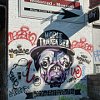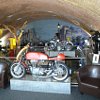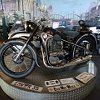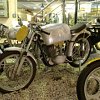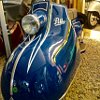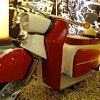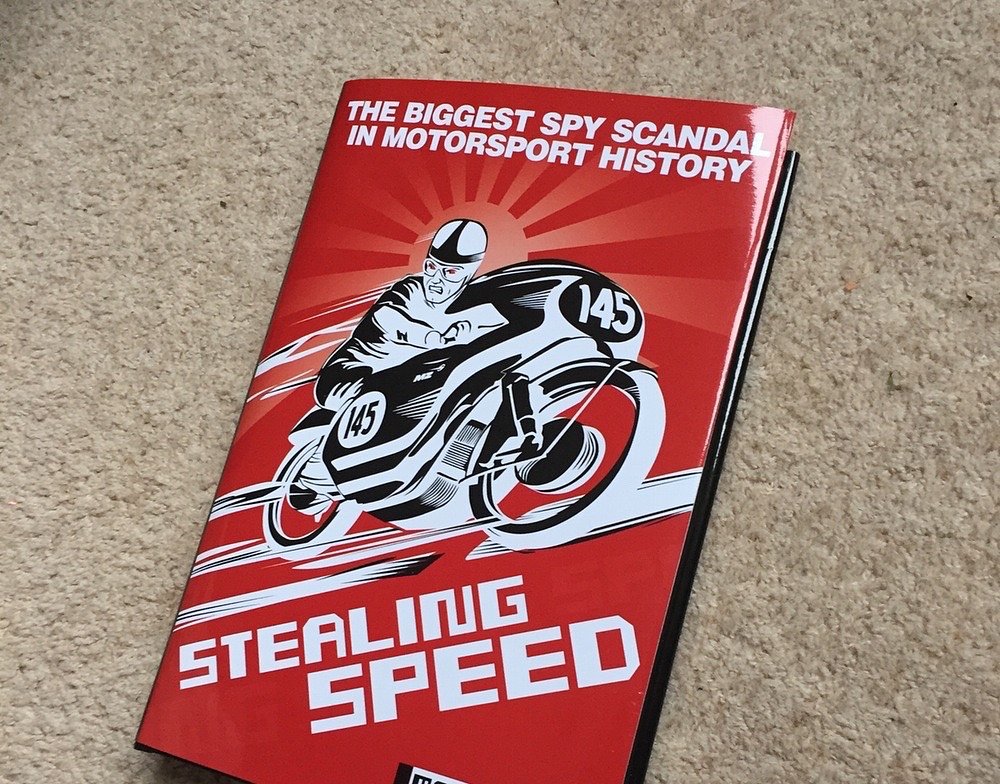I still vividly remember seeing the news that the Berlin Wall was being torn down. On television. That was how we used to get breaking news, before the internet.
One day in 1989, Berlin’s Communist Party boss decreed that East Germans could henceforth travel freely through the six border posts, including the famous “Checkpoint Charlie” featured in so many spy movies, that had been guarded by soldiers with standing shoot-to-kill orders. Soon, crowds attacked the wall with sledge hammers, desperate to make this new openness a permanent state.
I grew up in Europe (although by 1989, I was again living in my native Canada). I knew people whose families had been divided; others who’d risked their lives to escape to West and had given up any hope of ever seeing those people they’d left behind. The scenes of the wall being torn down were emotional; for those of us who came of age during the Cold War, nothing has been the same.
My first thoughts were a little more prosaic, however.
I hoped it would occur to someone to preserve the terrible cars and motorcycles of the Deutsche Democratischer Republic (DDR), what we called East Germany.
I knew that when those soon-to-be-ex-Communists realized just how backward their vehicles were, said vehicles would be abandoned en masse. And given the water-soluble properties of East Bloc metallurgy – at least, the metals available for civilian production – those Trabants and MZs would dissolve of their own accord.
Who would save those lousy Commie motorcycles?

In search of Cold War moto-relics
Recently, I had to dig through the junkyard of my memories and cobble together a working version my old self – Mark the advertising guru – when I was asked to address a business group in Berlin. The organizers booked me into the Adlon Kempinski Hotel, strategically located between the U.S. and Russian embassies, in the shadow of the Brandenburg Gate.
Not far from my hotel, in 1963, Kennedy famously said, “Ich bin ein Berliner,” which literally meant “I am a jelly donut,” but the massed Germans got his drift, which was, I am one of you. And, in 1987, Ronald Reagan famously chided his Russian counterpart when he said, “Mr. Gorbachev, tear down this wall.” Strictly speaking, it was not up to Gorbachev, but the point was effectively made.
And the wall did come down, on November 9, 1989.
I needn’t have worried about someone preserving those water-soluble East Bloc motorcycles, though. I spent my one free day walking miles into the former East Berlin, to the Museum of DDR Motorcycles.
Yes, there is one! I mean, Berlin has a profound sense of its own history to be sure, so I assumed that I’d see one or two motorcycles preserved in some collection of artifacts. But I was chuffed to find an entire museum with well over 100 bikes from the Communist period.
It’s not an official state museum; it’s some private guy’s passion project, in a somewhat scruffy space under railroad tracks, so the whole place quietly rumbles every few minutes as trains roll directly overhead. I think I met the owner/curator, though I can’t be sure because my German is ersatz at best. (Everyone raised in West Berlin speaks English, but those raised in the former East learned Russian.)


Displays are presented in both German and English, but the English translations are courtesy of Google — and not the recent, good Google Translate but the crappy one from a few years back. At the best of times, technical subjects like motorcycles are tough assignments for machine translation. I found myself translating the translations. I figured out that “rinsing” was a reference to “scavenging” exhaust gases in two-stroke motors.

As a former (and crap) road racer, I was drawn to the race bikes. Here’s what I didn’t find: any of the fabulous MZ two-stroke Grand Prix bikes from the 1960s.
From 1953 on, Walter Kaaden – the inventor of the modern expansion chamber – ran the MZ race shop in Zschopau. The disc-valve two-strokes he created were a source of Communist pride and a favorite topic of propaganda, until East Germany’s star rider, Ernst Degner, defected to the west and delivered Kaaden’s secrets to Suzuki. The Degner/Kaaden defection story is too big to go into here. Instead, I’ll just recommend “Stealing Speed,” by Mat Oxley.
I might’ve missed something, but I don’t get the impression that the former East Germans ever completely forgave Degner – even if they understood his motivation.
Degner’s defection was a boon to Japan and the beginning of the end for MZ in Grands Prix. But there was still national championship in the DDR, and the Russians ran an all-Communist international championship. The little museum has some really fascinating home-brewed East German race bikes in the collection, which were built with limited resources — but no lack of imagination, or engineering and fabrication skill.

The museum gives a prominent place to a shaft-drive, 250 cc single that started out as a stolid Simson street bike but was converted to a road racer, complete with a twin, leading-shoe front brake sourced from a Yamaha — a component that must’ve been nearly unobtainable back in the day.

I was most impressed, however, by a 125 cc road racer that I believe began life as a clone of a DKW RT125, but which got a dummy cylinder grafted onto the bottom of the crankcase. The pumping effect of the dummy cylinder served to dramatically improve the scavenging efficiency of what, otherwise, was a crude piston-port two-stroke. Ground clearance? Well, that was a separate issue…

There are a number of sweet little off-road race bikes in the collection, illustrating East German engineers’ enduring love affair with Earles forks. I noticed one 1960s-era off-road bike that had a naugahyde shroud or skirt hanging beneath the saddle, that obviously served to protect the air cleaner and other components from mud and the elements. That seemed like a simple and effective idea to me.

Notwithstanding both official and unofficial support for competition, the bulk of the collection reflects the utilitarian focus of industry in the Communist period. The emphasis was on something comrade worker could use to get from her cold-water flat to the state-run chicken-slaughtering plant, splashing along roads that were always wet because under Communism, the weather was always cold and grey.
Just kidding. The weather was OK.

And designers still managed to create some really elegant little mopeds and scooters, mashing up organic Art Deco shapes with streamlined Futurism. Even the plainest, slab-sided scooters had the vaguely heroic simplicity of Russian Constructivist propaganda posters. (“Work harder, the Motherland needs steel!”)
As comically terrible as Trabant automobiles were, workers spent years on a waiting list to get one. So, if you were going to travel with the wife and a kid or two, the more available option was a sidecar. Lots were tugged by bikes making less than 20 horsepower, so they weren’t going anywhere quickly. But, neither were the cars.
There’s a handsome MZ on display that was a special-production item used by the cops who provided motorcycle escorts for VIPs. I imagine that western diplomats visited and were escorted by motorcycles that, seen from the inside of a limo, looked more or less like the ones used for that purpose in London or Paris. But under the fairing it was just another two-stroke smudgepot.
Most of the pre-World War II motorcycle production that had been located in East Germany was reorganized under the Communists, who created brands like MZ (Motorenwerke Zschopau) and IFA (Industrieverband Fahrzeugbau). But the Simson motorcycle brand and factory survived the transition to state-run industry.


By the mid-1980s, it was harder and harder for Eastern European governments to prevent citizens from realizing that people in the west had access to far more and better consumer goods. The government of the DDR was one of the most relentless at tamping down citizens’ nascent sense that they were getting screwed. A huge network of civilian informers fed the STASI secret police the names of anyone who seemed unsatisfied with life under Communism.

But even the STASI couldn’t prevent motorcyclists in the old DDR from realizing that fabulous things were happening on the other side of the wall. Like, for example, the arrival of the Suzuki GSX-R750. So, as a tiny part of a sweeping and vainglorious attempt to save the Communist system, they created their own race replica sport bikes. Which were pretty much the same crappy old two-strokes, now available with brightly painted fairings.

Mostly though, to the bitter end, they produced hundreds of thousands of MZ Trophy 250 cc singles. It was fast enough, could be stamped out easily enough, and with about six moving parts it was simple enough to keep running in an environment where there were shortages of absolutely everything.
I admit to having a forbidden love affair with the Trophy — which was also used by some hard-nosed motorcycle couriers in the west. In my long walks to and from the museum — though I saw dozens if not hundreds of bikes — I didn’t spot a single machine that had originated in the old DDR.
I imagined them, though. And wondered about the lives of others who’d ridden those now-rejected motorcycles. Even the most prosaic scooter must have given its rider at least a momentary sense of freedom.

Motorcycles outside of captivity
That evening, I asked the concierge at the hotel to tell me where I could go to get away from the oligarchs, diplomats, and tourists. I wanted to find some real Berliners. The concierge circled a street on the map and told me how to get to the U-bahn. It was hot, stuffy, and crowded on the subway as I counted stops.
I got off at a chaotic intersection and walked along a crowded sidewalk past a grocery store. That’s always a good sign. It means you’re in a neighborhood where people actually live. A girl of about six slalomed between pedestrians on a bicycle, chasing her older brother. A string of lights and hum of conversation beckoned me through a gate into the center of a block, where I found the perfect beer garden, the perfect beer, and the perfect bratwurst.
As dusk turned to night, I joined perhaps 2,000 people sitting at hundreds of picnic tables. Berlin has a profound sense of its own history, and if you are aware at all, you’re struck over and over by the way it’s been an epicenter of incredible cruelty and sadness over the last hundred years or so. But those people all seemed so healthy, and well adjusted, and simply happy.
As I left, I walked past a BMW K-series bike that had been built in West Germany, not just “Germany.” And I thought, well, of course that thing’s survived all these years. What’s a few decades for a brick?
I walked on, a few blocks in darkness now, back to the nearest U-bahn station. At two or three places on each block, light and people and food smells spilled out onto the sidewalk from some bar or café.
I heard it before I saw it.
That ring-ding. I turned and sure enough caught sight of a battered MZ Trophy — outfitted with bark busters for traffic, baby — trailing a blue haze of oil smoke as he turned a corner and disappeared.
So did I, down the steps into the U-bahn.





